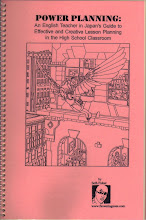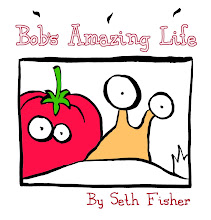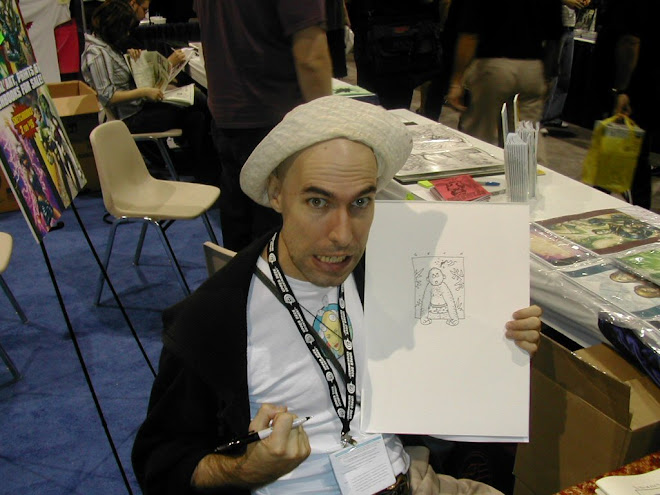Interestingly, in the lead story, the first of a series, they printed not only the graphic story, but also the script that was given to the artist, Gabriel Rodriguez. Though I am not a fan of the genre (horror) I read the story, Locke and Key. The pictures are stunning, but I thought the story was hard to follow, until I read it with the script in hand, continually looking from the script to the pictures.
Now, please understand, for the most part, I am not a comic book reader. The only comic books I own are ones that Seth did. So I am not the audience for whom this book was intended. I also am SO VERY familiar with Seth's work that I see all the subtleties that probably most readers miss. HOWEVER, it seems to me that even though some of the stories that Seth illustrated--notably Willworld, and the two issues of Doom Patrol--make jumps of logic that continually befuddle the reader, the pictures give details that clarify some of the more abstruse questions. I wondered what Seth would have done with the scripts that Gabriel was given. A useless question of course, but it brings out the matter of how to make a story clear.
I'd like to talk in the next few postings about some of the issues that give clarity to a story.

Issue number one: Who are the characters?
How do you identify the various characters? Line drawings of faces can be very general, especially when they are printed small enough to put several boxes of them inside a page that is about 8" x 10".
Here is something that Seth said to an aspiring artist about making characters identifiable:
"Try to design characters so that they are identifable 360 degrees around. Ie the mohawk is a good design since you can ID the character from the back of the head so it gives you more options for angles to take in the scene and still keep things clear. You can use hats, clothes, a bird on their shoulder, whatever...."
"Try to design characters so that they are identifable 360 degrees around. Ie the mohawk is a good design since you can ID the character from the back of the head so it gives you more options for angles to take in the scene and still keep things clear. You can use hats, clothes, a bird on their shoulder, whatever...."
In this page from Willworld, the cast of characters has their own peculiarities that give them instant readability: Hal of course wears the green mask. But even in black and white, his face is recognizable. His hair falls lankly down on his forehead, and he has that bewildered expression. Mu-Fon has no nose, and a beret and turtleneck sweater. Kelly has six arms. Even the people at the bar who we see only once in the story are all recognizable as individuals, both from their clothing and their facial style.





2 comments:
That's great to hear that the story has been published - I'll have to check it out.
Langdon's inks are very Seth-like!
Gareth,
Langdon and Seth started out in college both doing pen-and-ink line drawings, and thinking fond thoughts of becoming comic book artists. Then during this formative time, they developed alongside each other, always learning from each other. So each of their work has always had a resemblance to the other's. Anyway, Langdon did not do this in imitation of Seth's style; this is his own style. I know you didn't say that, but in a letter that Joe Hill wrote inside the comic, he said something that made it sound as if Langdon was imitating Seth. He wasn't.
Post a Comment